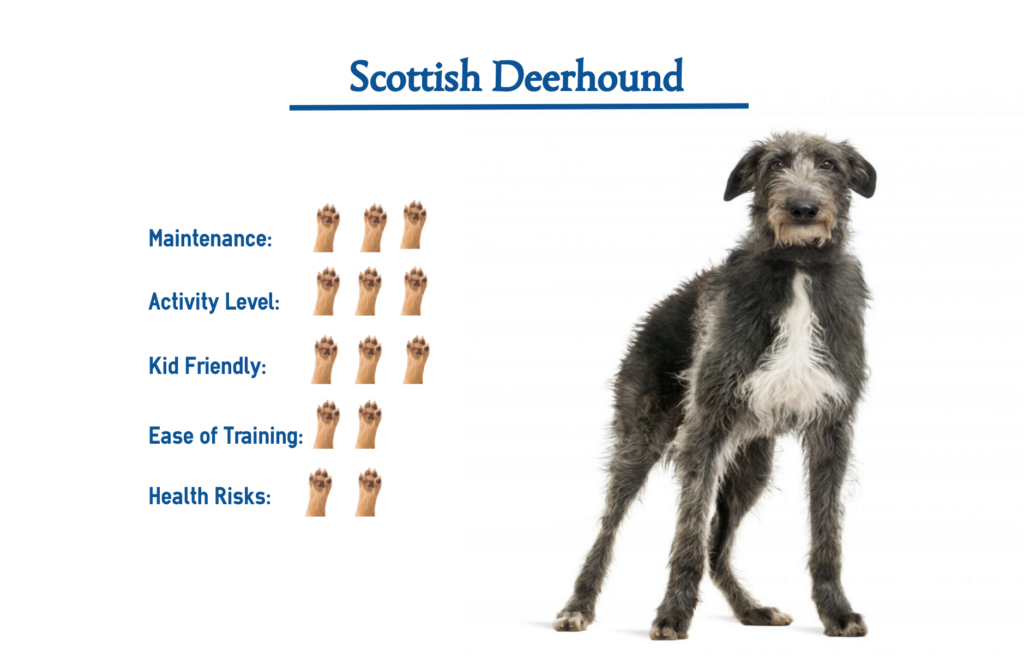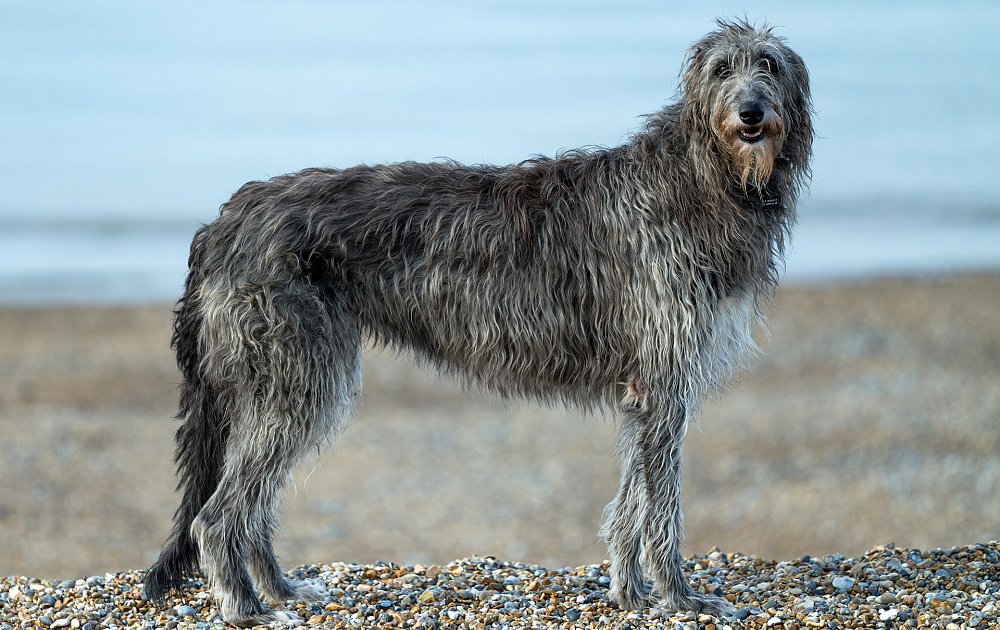The Scottish Deerhound, or simply the Deerhound, is a large breed of hound (a sighthound), once bred to hunt the red deer by coursing. In outward appearance, the Scottish Deerhound is similar to the Greyhound but larger and more heavily boned with a rough-coat. The Deerhound is closely related to the Irish Wolfhound and was a contributor to that breed when it was re-created at the end of the 19th century.
History
The Hilton of Cadboll Stone dates from around 1,200 years ago and depicts at the bottom of the panel a deer that is being chased by two large dogs and two armed horsemen. However, systematic zooarchaeology and genetics have yet to show any connection between those symbolic representations of dog types and the modern breed, which only became widely known as the Scottish Deerhound distinct from regional greyhounds, such as the Highland greyhound or other staghounds in the early 19th century
The Deerhound was bred to hunt red deer by “coursing” and “deer-stalking” until the end of the 19th century. With modern rifles and smaller deer-forests, slower tracking dogs were preferred to fast and far-running Deerhounds. In coursing deer, a single Deerhound or a pair was brought as close as possible to red deer, then released to run one of them down by speed, which if successful would happen within a few minutes rarely were there successful sustained chases.
With the eventual demise of the clan systems in Scotland, these hunting dogs became sporting animals for landowners and the nobility but were also bred and hunted by common folk when feasible. As fast and silent hunters they made quick work of any game the size of a hare or larger and were highly regarded by nobility and poachers alike. One of the most precarious times in the breed’s history seems to have been towards the end of the nineteenth century when many of the large Scottish estates were split into small estates for sporting purposes, and few then kept Deerhounds. The new fashion was for stalking and shooting, which required only a tracking dog to follow the wounded animal, using a collie or similar breed. Although a few estates still employed Deerhounds for their original work, the breed was left in the hands of a few enthusiasts who made them a show breed.
Description

In outward appearance, the Scottish Deerhound is similar to the Greyhound, but larger and more heavily boned. However, Deerhounds have several characteristics that set them apart. While not as fast as a Greyhound on a smooth, firm surface, once the going gets rough or heavy they can outrun a Greyhound. The environment in which they worked, the cool, often wet, and hilly Scottish Highland glens, contributed to the larger, rough-coated appearance of the breed. The Deerhound is closely related to the Irish Wolfhound and was a contributor to that breed when it was created at the end of the 19th century.
The Scottish Deerhound resembles a rough-coated Greyhound. It is, however, larger in size and bone. Height of males from 30 to 32 inches (75–80 cm) or more, weight 85 to 110 pounds (40–50 kg); the height of females from 28 inches (70 cm) upwards, weight from 75 to 95 pounds (35–43 kg). It is one of the tallest sighthounds, with a harsh 3–4-inch long coat and mane, somewhat softer beard and moustache, and softer hair on breast and belly. It has small, dark “rose” ears which are soft and folded back against the head unless held semi-erect in excitement. The harsh, wiry coat in modern dogs is only seen in self-coloured various shades of grey (blue-grey is preferred). Historically, Deerhounds also could be seen with true brindle, yellow, and red fawn coats, or combinations. 19th-century Scottish paintings tend to indicate these colours were associated with a wire-haired coat, but, with show breeders preferring a longer coat, these genes now appear to be lost. A white chest and toes are allowed, and a slight white tip to the tail; a white blaze on the head or a white-collar are not accepted. The head is long, skull flat, with little stop and a tapering muzzle. The eyes are dark, dark brown or hazel. The teeth should form a level, complete scissor bite. The long straight or curved tail, well covered with hair, should almost reach the ground.
